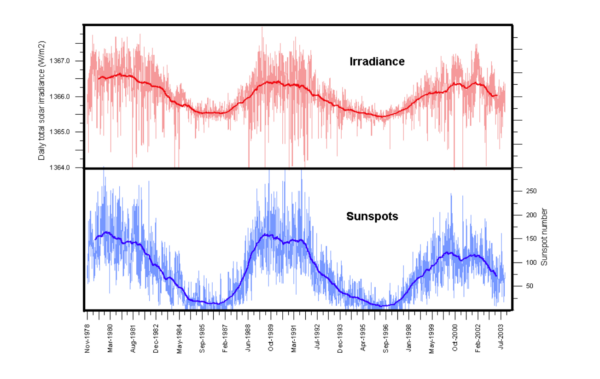The powerful solar storms of May 2024 were a sign of the sun’s increasing activity as it nears the peak of its 11-year cycle. These events can disrupt satellites and power grids, highlighting the importance of solar weather monitoring and preparedness.
Predicting solar flares and geomagnetic storms is challenging. Current technology struggles due to the sun’s constantly changing magnetic field, making it difficult to pinpoint the exact location and intensity of an eruption. However, agencies like the National Oceanic and Atmospheric Administration (NOAA) in the US and the European Space Agency collaborate to monitor solar activity and issue forecasts based on past observations and real-time data, helping us prepare for potential impacts.

Whilst solar storms are difficult to predict accurately ahead of time, we do know this solar cycle is expected to reach its maximum in 2025, meaning that there are more intense solar flares and geomagnetic storms on the way in the coming months and years.
For solar energy, for strong solar events the potential impacts on power grids, and the impacts on solar’s enabling technologies like GPS are very real. Solcast is sometimes asked about the impacts on solar irradiance and PV power production. Do we see an increase in irradiance at the peak of the 11-year cycle?
The answer is yes, but only slightly. The peak of the solar cycle does tend to increase the earth’s average annual extra-terrestrial irradiance, but only by a very small amount. Extra-terrestrial irradiance refers to the intensity of sunlight reaching the Earth’s upper atmosphere, essentially the amount of solar energy we would receive without any atmospheric interference. This value is often represented by the “solar constant,” which has a traditionally accepted average of around 1361 W/m². However, this isn’t a truly constant value. The Earth’s orbit around the Sun isn’t perfectly circular, but slightly elliptical. This means the distance between Earth and the Sun varies throughout the year. When Earth is closer to the Sun (perihelion in January), the extra-terrestrial irradiance can reach highs of about 1410 W/m². Conversely, when Earth is farthest from the Sun (aphelion in July), the irradiance dips to around 1320 W/m². This variation amounts to roughly a 3.5% fluctuation in the intensity of sunlight reaching the top of the atmosphere. This fluctuation is very accurately modeled in the irradiance modeling used by the Solcast API, DNV and other leading solar resource agencies.

Whilst the annual cycle of extra-terrestrial irradiance causes a steady, predictable and significant 3.5% change through the seasonal cycle, the peak of the 11-year cycle of solar activity causes a smaller, more sporadic and unpredictable set of fluctuations.

(equivalent to 0.07% clearsky irradiance)Image: NASA
The net result of these increased fluctuations is an increase in extra-terrestrial irradiance (and therefore also the irradiance we receive at the ground) of only around 1 W/m² (i.e. only about one-tenth of one percent) when averaged over a year! The very small size of this effect, along with the random nature of the fluctuations, means there is very little value in attempting to even include the effect in solar irradiance modeling calculations.
Solcast produces these figures by tracking clouds and aerosols at 1-2km resolution globally, using satellite data and proprietary AI/ML algorithms. This data is used to drive irradiance models, enabling Solcast to calculate irradiance at high resolution, with typical bias of less than 2%, and also cloud-tracking forecasts. This data is used by more than 300 companies managing over 150GW of solar assets globally.
The views and opinions expressed in this article are the author’s own, and do not necessarily reflect those held by pv magazine.
This content is protected by copyright and may not be reused. If you want to cooperate with us and would like to reuse some of our content, please contact: editors@pv-magazine.com.







By submitting this form you agree to pv magazine using your data for the purposes of publishing your comment.
Your personal data will only be disclosed or otherwise transmitted to third parties for the purposes of spam filtering or if this is necessary for technical maintenance of the website. Any other transfer to third parties will not take place unless this is justified on the basis of applicable data protection regulations or if pv magazine is legally obliged to do so.
You may revoke this consent at any time with effect for the future, in which case your personal data will be deleted immediately. Otherwise, your data will be deleted if pv magazine has processed your request or the purpose of data storage is fulfilled.
Further information on data privacy can be found in our Data Protection Policy.